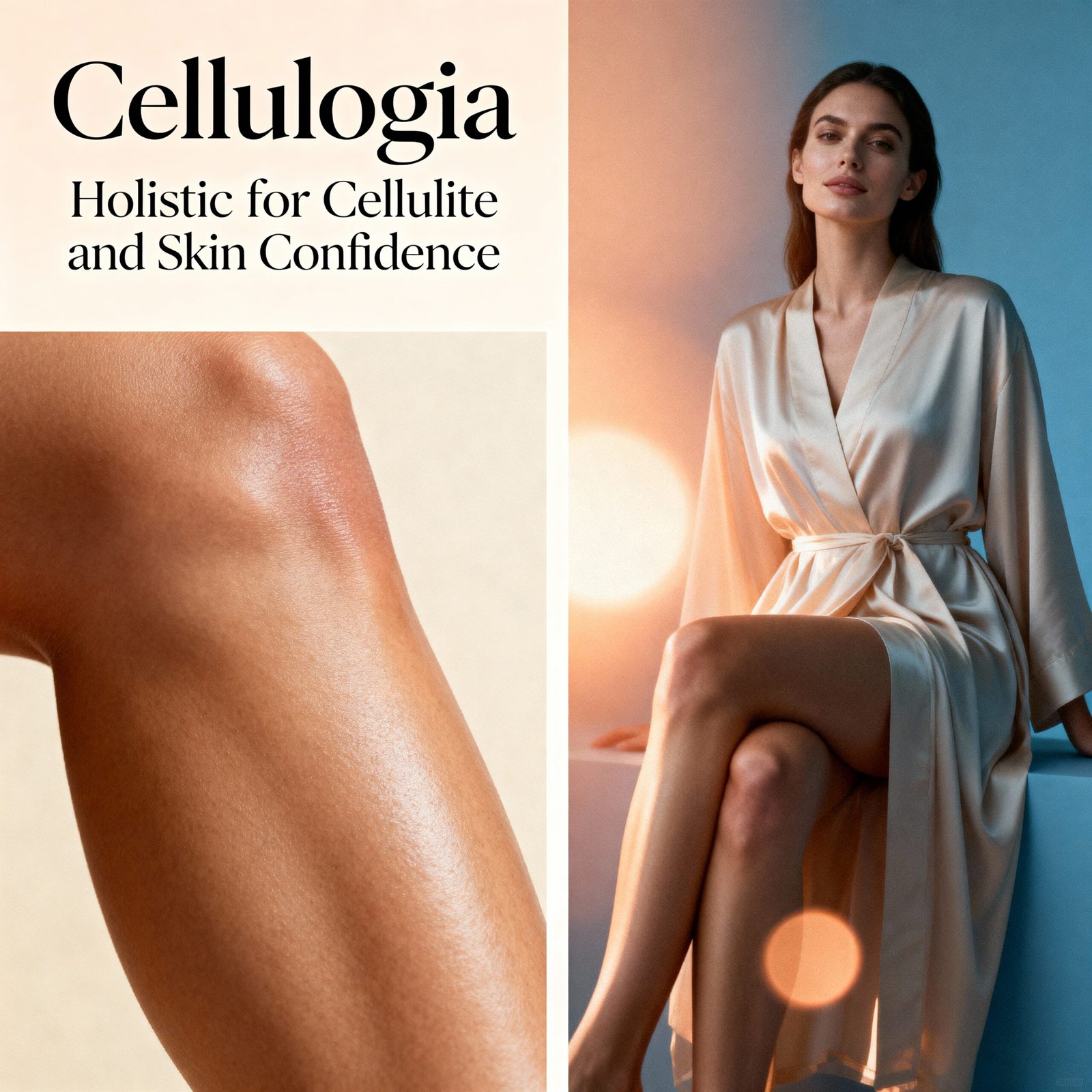Cellulogia Explained: Holistic Solutions for Cellulite and Skin Confidence
The skincare and wellness industries are constantly evolving, yet cellulite remains one of the most common and persistent beauty concerns worldwide. Despite decades of creams, devices, and surgical procedures promising flawless skin, the reality is that cellulite affects 80–90% of women and a smaller percentage of men regardless of weight, age, or fitness level. The dimpled, uneven appearance of skin—most noticeable on thighs, hips, and buttocks—has long been treated as a flaw, fueling a multi-billion-dollar industry of quick fixes. However, in recent years, a shift has emerged. People are increasingly seeking natural, effective, and science-backed solutions that prioritize health over perfection. Out of this growing demand, the concept of Cellulogia has gained traction.
What Is Cellulogia?
At its core, it is the study of cellulite and skin health at a cellular level. It integrates scientific research, dermatology, and holistic wellness practices to provide sustainable methods for improving skin texture. Unlike many traditional approaches, it emphasizes non-invasive techniques such as radiofrequency therapy, lymphatic drainage, nutrition, and massage while encouraging lifestyle changes like fitness and stress management.
It matters because it moves beyond chasing unrealistic beauty standards. Instead, it promotes sustainable skin health, body confidence, and acceptance of natural texture, all while offering measurable improvements for those who desire them.
The purpose of this article is to provide a comprehensive, 360-degree exploration of it —its origins, scientific foundations, treatment methods, research, applications, benefits, criticisms, and future prospects.
Origins and Evolution
Etymology
The term it comes from:
- Cellul- (referring to cellulite)
- -logia (from Greek, meaning “study” or “science”).
Thus, it literally means “the science or study of cellulite.”
Historical Context
The fascination with smooth skin is not new. Ancient cultures like the Egyptians and Greeks experimented with oils, scrubs, and herbal treatments to enhance skin beauty. By the 19th century, dermatology emerged as a medical field, focusing primarily on skin diseases. In the 20th century, cosmetic sciences expanded rapidly, offering commercial solutions for beauty enhancement, including cellulite creams and spa treatments.
Evolution of Cellulite Treatments
- 1950s–1980s: Home creams, rollers, and manual massage were the norm, offering temporary results.
- 1990s: Invasive methods like liposuction became popular but carried risks and were not effective for cellulite specifically.
- 2000s: Advanced technologies like laser therapy, ultrasound, and radiofrequency emerged.
- 2010s–2020s: A noticeable shift toward holistic and non-invasive methods—this is where Cellulogia finds its foundation, blending science with lifestyle-based wellness.
Core Principles of Cellulogia
It is built upon a holistic philosophy that targets the root causes of cellulite rather than masking symptoms.
Three Key Pillars
- Scientific Foundation – Understanding how cellulite forms at the cellular and connective-tissue level.
- Natural and Non-Invasive Methods – Prioritizing massage, nutrition, hydration, and lymphatic health over surgical intervention.
- Lifestyle Integration – Encouraging exercise, balanced diets, and stress management to maintain long-term results.
Focus on Sustainability
Unlike “miracle cures,” it promotes gradual, realistic, and sustainable results. This philosophy aligns with modern movements in self-care and body positivity, emphasizing that improvement, not perfection, is the goal.
The Science Behind Cellu-logia
How Cellulite Forms
Cellulite develops when fat cells push upward against the skin while connective tissue pulls downward, creating a dimpled effect.
- Skin Layers Involved:
- Epidermis – outermost layer.
- Dermis – where collagen and elastin provide support.
- Subcutaneous fat – where enlargement of fat cells disrupts smooth texture.
- Epidermis – outermost layer.
Biological Factors
- Genetics – Family history influences skin thickness and fat distribution.
- Hormones – Estrogen, insulin, and thyroid hormones impact fat storage.
- Circulation – Poor blood flow weakens connective tissue.
- Collagen and Elastin – Reduced production with age leads to looser skin.
Lifestyle and Environmental Factors
- Poor diet (processed foods, high sugar).
- Dehydration.
- Smoking and alcohol.
- Sedentary lifestyle.
- Stress and poor sleep patterns.
Scientific Research Support
- Hydration improves skin elasticity.
- Nutrition supports collagen synthesis.
- Exercise reduces fat accumulation and improves circulation.
Together, these findings reinforce the scientific legitimacy of Cellulogia’s methods.
Cellu-logia Treatments and Techniques
1. Radiofrequency Therapy
- Uses energy waves to heat deep skin layers.
- Stimulates collagen production and strengthens connective tissue.
- Results: firmer, smoother skin with minimal downtime.
- Backed by clinical studies showing measurable improvements in elasticity.
2. Lymphatic Massage
- Involves gentle, rhythmic strokes along lymphatic pathways.
- Encourages fluid drainage, reduces puffiness, and improves circulation.
- Distinct from regular massage because it follows precise lymphatic mapping.
- Regular sessions yield visible cellulite reduction.
3. Nutrition and Lifestyle Support
- Diet: Antioxidants (berries, green tea), fiber, lean protein.
- Hydration: Keeps skin plump and reduces dimpling.
- Exercise: Improves muscle tone and burns fat.
- Stress Management: Yoga, meditation, and quality sleep balance hormones.
4. Complementary Therapies
- Dry brushing stimulates the lymphatic system.
- Plant-based supplements support skin health.
- At-home rollers extend results from professional treatments.
5. Integration of Methods
A typical it protocol may include:
- Weekly radiofrequency + lymphatic massage.
- Daily hydration and nutrition plan.
- At-home practices like dry brushing.
The philosophy is synergy over isolation—treatments work best when combined.
Cellulogia vs. Traditional Cellulite Treatments
| Method | Timeline | Invasiveness | Cost | Results | Sustainability |
| Topical Creams | Weeks | None | Low | Minimal, short-term | Poor |
| Laser Therapy | Months | Minimal | High | Effective | Moderate |
| Liposuction | Immediate | Invasive | Very High | Risky, not lasting | Low |
| Exercise Alone | Ongoing | None | Low | Indirect benefits | Moderate |
| Cellulogia | 3–6 months | Non-invasive | Moderate | Gradual, natural | High |
Research and Effectiveness
- Radiofrequency: Clinical studies confirm increased collagen production.
- Lymphatic Drainage: Research shows improved circulation and skin texture.
- Nutrition: Diets rich in antioxidants correlate with better skin health.
Patient Experiences
- Results are gradual and realistic, often noticeable within 3–6 months.
- Works best when combined with lifestyle changes.
Limitations
- Not a permanent cure.
- Requires consistency and maintenance.
- Some clinics may exaggerate results.
Applications Across Industries
- Medical & Dermatology – Non-invasive treatments for patients.
- Cosmetics & Beauty – Spas and skincare products.
- Wellness & Holistic Health – Fitness and nutrition integration.
- Education & Training – Professional courses on cellular-level skin care.
- Technology – AI diagnostic tools to track cellulite severity.
Benefits of Cellu-logia
- Natural, safe, and non-invasive.
- Improves skin texture and elasticity.
- Promotes body positivity and confidence.
- Encourages healthy lifestyle habits.
- Offers a sustainable, affordable approach.
Challenges and Criticisms
- Scientific Skepticism – Limited studies specifically on it.
- Marketing Hype – Some overpromise results.
- Patient Expectations – Results are gradual, not instant.
- Accessibility – Costs may be prohibitive in some regions.
- Consistency – Requires lifestyle commitment.
The Future of Cellu-logia
- Technology: AI-driven skin analysis, multi-device therapies, biostimulation.
- Global Trends: Growing demand for natural and sustainable beauty.
- Cultural Shifts: Society is embracing authentic body textures—Cellulogia supports enhancement, not perfection.
Conclusion
It represents a revolution in cellulite management by blending science, wellness, and holistic practices. It is not about chasing impossible ideals but rather about empowerment, confidence, and sustainable skin health.
By addressing root causes through cellular science, lifestyle changes, and non-invasive therapies, Cellulogia offers a path toward smoother skin while celebrating natural beauty. The message is clear: cellulite does not define beauty, and with it, people can achieve both healthier skin and greater self-acceptance.





